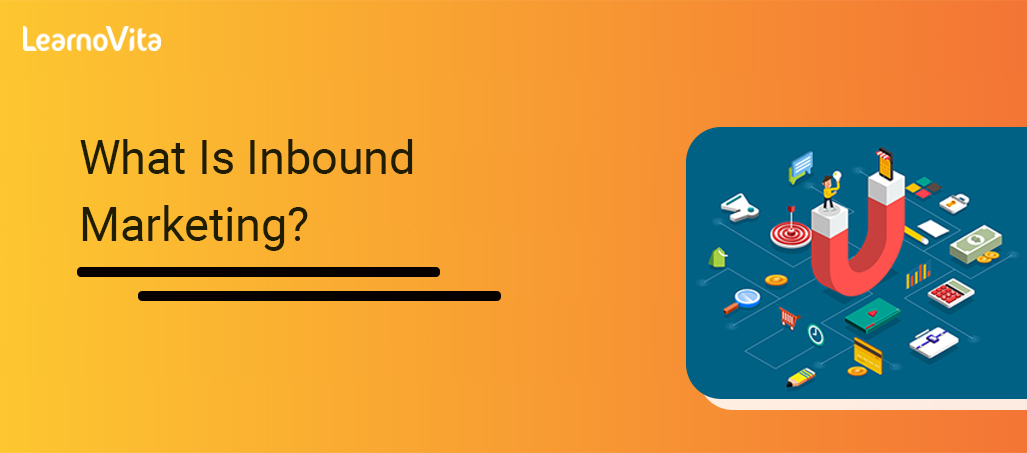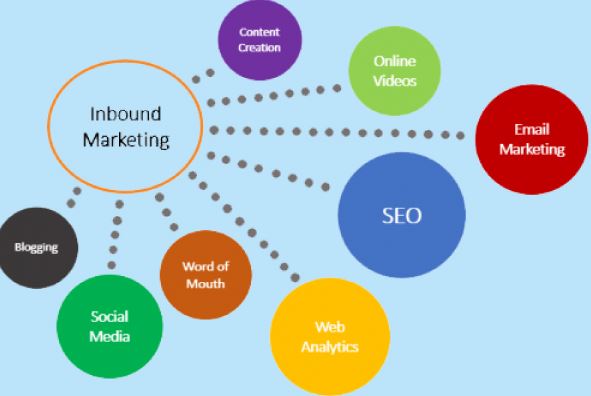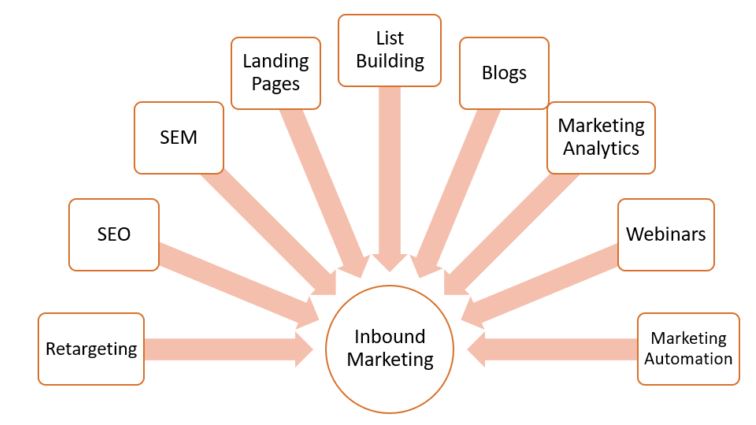- Digital Marketing for Startups | All you need to know [ OverView ]
- Which MBA Specialization is best?
- What is Digital Transformation framework? [ OverView ]
- What is Display Advertising | A Beginner’s Guide [OverView]
- SEO Strategies to Avoid Major Google Penalties In 2022 | Everything You Need to Know to Become an Expert
- Google Algorithm Changes and How it Impacts SEO Marketer | A Complete Guide For Beginners
- All the Social Media Apps You Should Know in 2022 | Everything You Need to Know to Become an Expert
- Top 10 Remarkable Benefits of being a Content Marketer | Everything You Need to Know
- What Is Inbound Marketing? Definition, Advantages | All you need to know [ OverView ]
- What are the Types of Content Marketing | Everything You Need to Know to Become an Expert
- A Complete Guide For Video Marketing: Tips and Strategy | Free Guide Tutorial & REAL-TIME Examples
- What is Email Marketing and Its Tools | Step-By-Step Process [ OverView ]
- what is Sitecore? : A Comprehensive Guide | Everything You Need to Know
- What is Branding and why it is Important for your Business? [ For Freshers and Experience ]
- Top 10 Benefits of Social Media Marketing | A Definitive Guide
- Outstanding Social Media Campaigns : A Complete Guide For Beginners [ OverView ]
- SEO vs SEM | Know Their Differences and Which Should You Learn?
- How Social Media Has Changed the Music Festival Scene | REAL-TIME Examples
- What is Alexa Ranking? : Step-By-Step Process with REAL-TIME Examples
- Content Delivery Network Process with Real-Time Examples
- Types of Digital Marketing | A Complete Guide with Best Practices
- Instagram vs Facebook : Which is More Effective | Difference You Should Know
- Digital Marketing Job Description [ Job & Future ]
- Digital Marketing Salary, Roles and Responsibilities [ Job & Future ]
- What Is Digital Business ? Expert’s Top Picks
- Traditional Marketing vs Digital Marketing | Difference You Should Know
- Top Social Media Influencers
- Social Media Marketing Skills to Grow in 2020
- What Is the Major Impact of Social Media?
- How To get more subscribers to YouTube channel?
- Digital Marketing Ebooks
- What are the rules of blogging?
- The Complete Guide to YouTube Marketing in 2020
- Top PPC Resources and Communities
- The Scope of Digital Marketing in 2020
- Tips To Learn Digital Marketing
- The History and Evolution of Digital Marketing
- The Science Behind Influencer Marketing
- Career Paths for Today’s SEO Specialist
- What does a PPC specialist do?
- How to Create a Digital Marketing Report?
- E-learning Content Deployment Considerations
- Why Choose a Career in Digital Marketing?
- Top Digital Marketing Experts
- What is Content Distribution?
- Digital Marketing Certification Process
- How Big Brands Transforming Experience Through Digital Transformation?
- Local SEO Tips To Rule Google Maps
- How to Become a Digital Marketing Specialist?
- Digital Marketing for Startups | All you need to know [ OverView ]
- Which MBA Specialization is best?
- What is Digital Transformation framework? [ OverView ]
- What is Display Advertising | A Beginner’s Guide [OverView]
- SEO Strategies to Avoid Major Google Penalties In 2022 | Everything You Need to Know to Become an Expert
- Google Algorithm Changes and How it Impacts SEO Marketer | A Complete Guide For Beginners
- All the Social Media Apps You Should Know in 2022 | Everything You Need to Know to Become an Expert
- Top 10 Remarkable Benefits of being a Content Marketer | Everything You Need to Know
- What Is Inbound Marketing? Definition, Advantages | All you need to know [ OverView ]
- What are the Types of Content Marketing | Everything You Need to Know to Become an Expert
- A Complete Guide For Video Marketing: Tips and Strategy | Free Guide Tutorial & REAL-TIME Examples
- What is Email Marketing and Its Tools | Step-By-Step Process [ OverView ]
- what is Sitecore? : A Comprehensive Guide | Everything You Need to Know
- What is Branding and why it is Important for your Business? [ For Freshers and Experience ]
- Top 10 Benefits of Social Media Marketing | A Definitive Guide
- Outstanding Social Media Campaigns : A Complete Guide For Beginners [ OverView ]
- SEO vs SEM | Know Their Differences and Which Should You Learn?
- How Social Media Has Changed the Music Festival Scene | REAL-TIME Examples
- What is Alexa Ranking? : Step-By-Step Process with REAL-TIME Examples
- Content Delivery Network Process with Real-Time Examples
- Types of Digital Marketing | A Complete Guide with Best Practices
- Instagram vs Facebook : Which is More Effective | Difference You Should Know
- Digital Marketing Job Description [ Job & Future ]
- Digital Marketing Salary, Roles and Responsibilities [ Job & Future ]
- What Is Digital Business ? Expert’s Top Picks
- Traditional Marketing vs Digital Marketing | Difference You Should Know
- Top Social Media Influencers
- Social Media Marketing Skills to Grow in 2020
- What Is the Major Impact of Social Media?
- How To get more subscribers to YouTube channel?
- Digital Marketing Ebooks
- What are the rules of blogging?
- The Complete Guide to YouTube Marketing in 2020
- Top PPC Resources and Communities
- The Scope of Digital Marketing in 2020
- Tips To Learn Digital Marketing
- The History and Evolution of Digital Marketing
- The Science Behind Influencer Marketing
- Career Paths for Today’s SEO Specialist
- What does a PPC specialist do?
- How to Create a Digital Marketing Report?
- E-learning Content Deployment Considerations
- Why Choose a Career in Digital Marketing?
- Top Digital Marketing Experts
- What is Content Distribution?
- Digital Marketing Certification Process
- How Big Brands Transforming Experience Through Digital Transformation?
- Local SEO Tips To Rule Google Maps
- How to Become a Digital Marketing Specialist?

What Is Inbound Marketing? Definition, Advantages | All you need to know [ OverView ]
Last updated on 04th Nov 2022, Artciles, Blog, Digital Marketing
- In this article you will learn:
- 1.What is Inbound Marketing?
- 2.What is Inbound Marketing: Principles.
- 3.What is Inbound Marketing: Strategies.
- 4.Common Problems Inbound Marketing.
- 5.Conclusion.
What is Inbound Marketing?
It is the strategy designed to help a brands become more attractive so that a customers come to them. In more ways this way of inbound thinking is the break from the past where customers had to ask for an information about prices, product details and more. Now a buyers can do a large portion of buying process themselves online.
What is Inbound Marketing: Principles:
It is a set of a principles to help a company adapt to this be changing situation by shifting consumer’s relationship with a product.To achieve this an organic relationship, initiated first and foremost by a customer, the seller must adopt the inbound market strategy. This strategy is generally explained in three or a four phases, typically categorized as a attraction, engagement, action, and satisfaction. More inbound thinkers visualize this process as “flywheel” to show that energy can push or stall process. Every phase must be successful to sustain a momentum through a following steps:
Attraction: A targeted customer base is a drawn to the product through a relevant digital means.
Engagement: The process in which the customers are onboarded to a product and engaged throughout buying process.
Action: This is a customer’s purchase decision, including a momentum leading right up to an action.
Satisfaction: This is a post-purchase decision that helps customer transform from a purchaser to an advocate for a product.

What is Inbound Marketing: Strategies:
Attraction:
- This phase is focused on a bringing targeted customers who are more likely to be engage a product and be satisfied with final phase. A crucial point here is that a customers typically don’t like a feeling “marketed” through interruptive messages are telemarketing calls, unsolicited emails, TV ads and the other means. This is the crucial shift in a digital age where people have a more control and selectivity over what they can be consume.
- Due to this situation, technology and digital tools must be a continuously leveraged and evaluated at this stage. A Using analytics to be intelligently target are desirable customer base for example can be an incorporated in a marketing strategy.
Engagement:
- After an initial attraction to a brand, the customer typically needs a seamless engagement process that an empowers them to take action easily while also giving them a control over their choices.
- There are particular strategies used to pull the customer in from of attraction phase to a deeper connection with a product. This may look like a seamless landing pages, intuitive forms, calls-to-action, and more. A Calls-to-action must be made with a customer in mind as they inform customer what step(s) they should take next to be engage.
- What are compelling message is a customer seeking from a marketing they’re exposed to? Inbound marketing emphasizes a value above all else as a marketing strategy. SEO, social media, blogging, and the other means can increase brand awareness and attraction to bring people.
Action:
- This is a customer’s purchase decision or action that are solidifies their relationship with a company. On both front-end for the customer and the back-end for a company, action steps should be a clear, concise, and specifically designed for a customer. Expectations for the seamless organic buying process have been established in a attraction and engagement processes, so action steps are must meet that perception.
- Incorporating the customer relations management (CRM) system can be enable user-friendly calls-to-action. These are CRM systems help companies are collect customer information and track engagement, action, and satisfaction all in a one place. Basically this management tool can track a customer’s relationship with company.
Satisfaction:
- Companies are should not end their marketing once a customer has made a purchase. From this point on,a customers should be encouraged to become ambassadors of a brand by sharing their opinions, knowledge, and experience with the others.
- Marketers and technology are specialists should consider this situation as they are engage a customer after a product by providing opportunities to the submit reviews and post on a social media to help those who are entering attraction phase.

How Does Inbound Marketing Work?
Creating an impressive content is more about a commitment and ideas rather than a budget. Spending money on a content won’t make it effective. The five simple steps will help to understand how an inbound marketing works:
Step 1: Identify Audience and Define a Business Goals
Begin by identifying a buyer personas and grasp all knowledge about them. can’t write a informative content without a prior knowledge of a audience.
Step 2: Provide Content for a different Stages
When preemptively answer a customers’ questions that they are likely to have at a different stages of their buying journey, bring about a transformational changes. By leveraging inbound can create a valuable content and retain customers are throughout their lifecycle.
Step 3: Pick a Right Delivery Platforms
It is the crucial to find the best way to reach out to the customers. Choose from a top trending digital platforms like a Twitter, Instagram, Pinterest, Facebook, website, or others.
Step 4: Formulate and Execute Content Calendar
Consistency is a key to success. So, create schedule for producing a fresh and relevant content to engage an audience. Keeping a constant stream of an information that addresses are audience’s questions, concerns, and pain points, builds a brand value and customer loyalty.
Step 5: Analyse and Optimize a Inbound Marketing
An Analyzing SEO rankings, published articles and inbound links are provides a valuable insight into the marketing campaigns’ performance. Find time for a weekly analysis to gauge an inbound marketing effectiveness and a an look for areas for improvement.
Conclusion:
New marketing trends are be appearing constantly. Inbound marketing, at a first glance, may seem like no exception. But this strategy has become vital paradigm across the many sectors, be it in a sales, technology, non-profit, or something else.